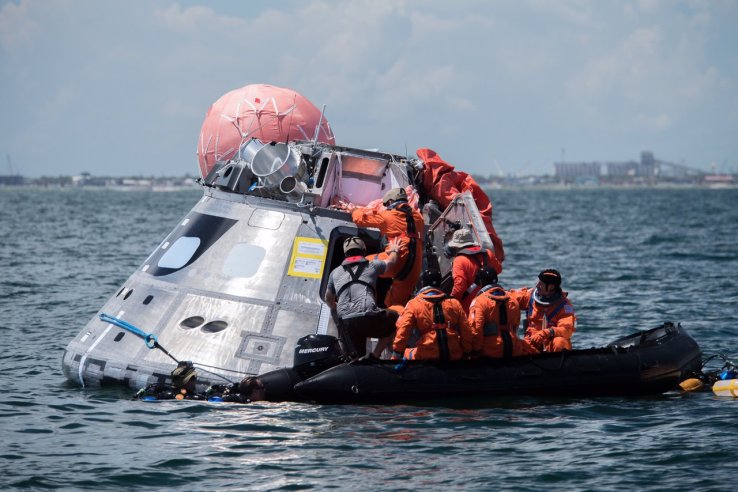NASA tests astronaut ocean exit process for Orion crew capsule

NASA has a long and thorough safety certification process for any vessels hoping to transport astronauts to space and back – and its Orion crew capsule is no exception. The vehicle, which is aiming to first launch with a crew aboard the Space Launch System (SLS) heavy lift rocket sometime between 2021 and 2023, underwent water exit testing (via Space) in the Gulf of Mexico, to see how it would fare if astronauts ever have to let themselves out and boat to safety after a Pacific Ocean splashdown.
The NASA test took place on July 11, and involved shipping the Orion capsule out into the Gulf on board a U.S. Coast Guard ship, where it was placed in the water. Astronauts then suited up and shipped out on a dinghy to climb into the capsule, where they recreated the emergency egress procedures that they’d actually have to run through should the capsule ever wind up in the Pacific Ocean.
Astronauts making their way out of the capsule and jetting away via their own inflatable, bright orange safety raft isn’t the preferred course of egress – once the Orion sets down in the Pacific as intended, standard operating procedure would have an Earth-based recovery team head out to retrieve the astronauts on board, which is better for all involved because those inside the capsule are likely to be feeling the ill effects of prolonged stays in space, which include muscle loss, for example.
But in case they can’t be reached within 24 hours for some reason (the time the Orion is designed to sustain them for) or they need to get away quicker, there are exit procedures in place that let the astronauts handle the whole process themselves – even with reduced capabilities.
Other crew craft are also running through the safety checklist NASA requires prior to crew launches, including the ULA and their CST-100 Starliner, which recently demonstrated the emergency egress system it’s designed for pre-launch operations when the craft is loaded aboard an Atlas V rocket.